It’s difficult to remain relevant in today’s fast-paced business environment. It’s even more difficult to remain competitive. To do so, having a robust product proposition and strategy is essential.
To quote Roger Martin’s Playing to Win: strategy is about choices. And the choices we make can enable us to win. Building a robust strategy entail being able to make the right choices (for you, your client, and the broader ecosystem) at the right times.
“A robust product strategy involves having a vigorous and strong plan that starts with a clear vision and can withstand the ever-changing business environment effectively.”
But a robust strategy is also one that is also able to adjust or tweak certain aspects if the situation calls for change.
How can you achieve this?
We’ll fill you in on some basics that are a must for your product strategy.

Stop talking and start listening…
Understanding your customers.
It is important to understand your customers’ needs, preferences, and pain points. By understanding your customer, you are better able to develop the necessary features and benefits within your product.
You have to get out there and start talking to people. Start by defining your research goals and identify what objectives you want to reach. The next step is pinpointing the best methods to reach them; surveys, focus groups, data analysis, and so on. Where necessary, leverage your network to get additional reach.
After you have collected insights, use this information to create fictional representations of your target customer’s demographics, behaviors, preferences, and challenges: persona’s. These will be used to inform your product strategy.
But beware: assumptions are the mother of all screw-ups!
Avoid making assumptions about your customer’s needs, behavior, or challenges, as this can be very costly. Making assumptions can put you at a competitive disadvantage because if you’re wrong, it doesn’t only make you look bad, you’re also back at square one.
A good and easy-to-use method for this is 5x why, to drill down on the root cause of a problem. Keep asking your customer ‘why’ until you can narrow down the key focus area. In short, you have to really talk to your (end) customer first (and ask them: “why?” a million times) to really understand them.
Keep your friends close and your enemies closer…
Understanding your competition.
The next step is gaining a firm understanding of your competition, relevant trends in the industry, and customer behavior.

By gathering knowledge of the competitive landscape’s strengths and weaknesses, you can identify opportunities where your offering can fill the gaps in the market.
A few tips and best practices for conducting a competitive analysis and developing a competitive strategy:
- Identify your direct and indirect competitors
- Use an ecosystem map (for example from Ecosystemizer) to capture the roles each competitor plays in the market and identify your position (more on this in future blogs!)
- Analyze your competitor’s offering (pricing, strengths, features, quality, value proposition, etc.) vis-à-vis your offering
- Uncover how your competitors reach their customers (and who their customers are)
From here on out you have a more solid foundation for building your well-informed competitive strategy. Knowing your customers and the competitive landscape better allows you to find your ‘why’.

Have a North Star…
Understand your why.
Now, at first glance, finding your North Star might seem easy, but to be entirely honest, it is not a simple task. However, although finding that North Star might seem daunting, it is crucial to take the time to reflect on who you are and what you represent. This is the first foundational block to building a product strategy.
Don’t be afraid to think about your personal link to the product or company’s North Star; what makes you excited? What will get you out of bed in the morning? How can you link these aspects to building a unique proposition? At the end of the day, you, as an individual, need to stand behind your product and strategy.
A few things that are important in this process include:
- Identifying your product’s strengths
- Identifying critical challenges that you may face in the future
- Identifying where to play (compete)
- And identifying how to play
- Having a compelling story to bring along your key stakeholders
- What do you need to bridge the gap between starting and winning
Identify your secret sauce…
Define your unique value proposition.
So, by now you should know your customer, know what your competition is doing, and know why you do what you do. The last crucial element is creating a unique value proposition to differentiate from competitors in the market.

Just like grandma’s secret recipes that are just so good, but you do not know how she does it, your organization needs its secret sauce. A secret sauce that is so good that your customers keep coming back to you and it is hard to be copied by your (direct) competition. Is it the way you leverage technology? Is it how you present your brand to leverage customer loyalty? Or is it because you gained a first-mover advantage, or your product is unique? Zeroing down on your secret sauce is crucial.
The next step is linking your secret sauce to the pain points you have previously identified. Consider how your company can make life easier for your customer, and how you can truly delight (not just satisfy – delight!) them with your offering.
A key aspect of this step is validating your unique value proposition. Does your offering delight your customers? What is it missing? What else does it need to make it a unique offering that resonates with your target customer?
Iteration is crucial: approach your target, ask for feedback, revise, and repeat!
Once you can align your unique offering and your client’s needs, go out and get them!
Go out and do it.
The final step in building a robust product strategy is to get out there and start doing! At The Value Department, we strongly believe in “learn by doing”. Start talking to your (end) customers, start interviewing people, start doing research, and start asking questions.

Why? Because the best propositions are based on data, research, and (client/user) validations.
So, go out and achieve amazing feats!
Value for everyone.
A strong well-defined product proposition combined with an excellent strategy execution can help you create more value for everyone in your ecosystem.
Reach out to us for any additional assistance with developing and implementing a product proposition and strategy that meet your unique needs and goals! We co-create vision and solutions to deliver value for everyone. For you, your client, and your client’s client.
Want to learn more about the specific elements of crafting your perfect product strategy? Stay in the loop and check out our LinkedIn page to read our latest insights.

Frédérique de Lange
Championing different opinions to think outside of the black-and-white and explore all colors.




